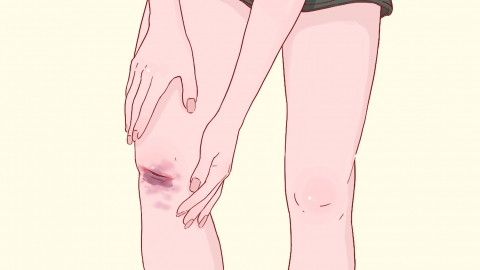What should I do for a bruised, swollen, and purple leg due to a fall?
Bruising, swelling, and purpling of the leg due to a fall can be managed by immediate cold compresses to stop bleeding, later application of heat to dissipate bruising, elevating the affected limb to reduce swelling, using topical anti-swelling medications, and minimizing movement of the injured limb. If severe pain, inability to move, or skin wounds with signs of infection occur, prompt medical attention is necessary.

1. Immediate Cold Compress to Stop Bleeding: Within the first 48 hours after injury, apply an ice pack or cold towel to the bruised and swollen area for 15–20 minutes at a time. The low temperature causes blood vessels to constrict, reducing bleeding and fluid leakage into tissues, thereby preventing further swelling.
2. Later Heat Application to Dissipate Bruising: After 48 hours, switch to warm compresses using a warm towel or hot water bottle, applied for 20–30 minutes each time. This helps improve local blood circulation, accelerate absorption of bruising, and relieve stiffness and discomfort caused by swelling.
3. Elevate the Affected Limb to Reduce Swelling: When resting, elevate the injured leg above heart level. This uses gravity to promote venous blood return, reduces venous pressure in the leg, helps alleviate swelling, and improves the purplish discoloration caused by bruising.
4. Topical Anti-Swelling Medications: Apply topical agents such as Yunnan Baiyao spray or safflower oil. These medications help promote blood circulation, resolve blood stasis, reduce swelling, and relieve pain. They penetrate through the skin to enhance local circulation, speeding up the dissipation of bruising and supporting tissue repair.
5. Minimize Movement of the Affected Limb: Avoid excessive walking, standing, or pressing on the injured area after the injury. If needed, use an elastic bandage for moderate compression (avoid wrapping too tightly). Reducing weight-bearing and movement helps prevent worsening of the injury and creates favorable conditions for tissue recovery.
Daily care should include keeping the injured area clean and dry, wearing loose clothing to avoid friction, and consuming adequate protein and vitamins in the diet to support tissue healing. Alternate cold and heat therapy as appropriate, and monitor the progress of swelling and bruising resolution.





